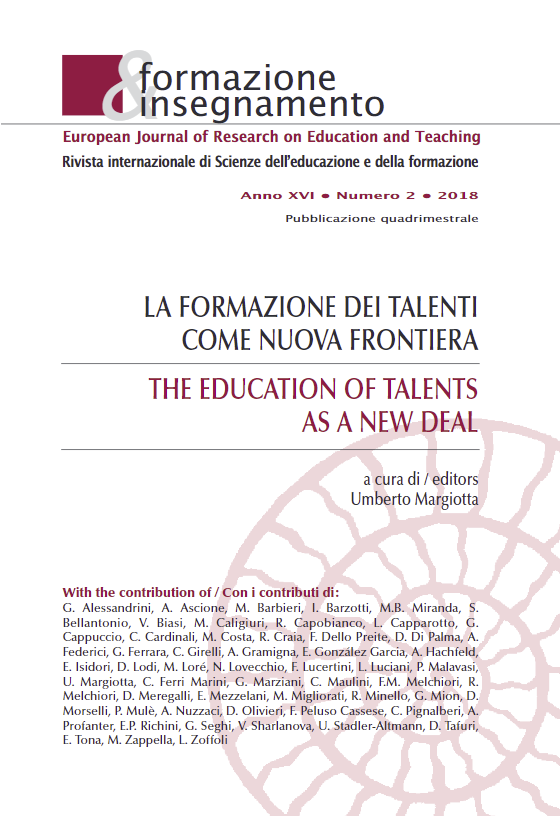Modelli di plusdotazione e sviluppo dei talenti: i gifted children
Abstract
Il riferimento generale alla plusdotazione si è evoluto nel tempo dal considerare in modo meccanico la mera performance di quoziente intellettivo a definizioni che includono tratti quali abilità cognitive specifiche, creatività, impegno nel compito, motivazione al successo, potenziale di leadership e anche abilità psicomotoria (Marland, 1972).
In realtà i gifted children si trovano spesso a dover affrontare problemi peculiari con la socializzazione e con lo sviluppo emotivo, soprattutto quando i bisogni scolastici mal si abbinano all’ambiente educativo.
Molti studiosi hanno proposto vari modi in cui genitori, insegnanti e counselor possono lavorare insieme per offrire sistemi di supporto educativo ed emotivo ai bambini plusdotati. Questi includono l’offerta di un’educazione qualitativamente differenziata, formando coloro che lavorano con i ragazzi plusdotati, riconoscendo la variabilità esistente tra questi ragazzi, aiutandoli a sviluppare meccanismi per far fronte, sia intellettualmente che emotivamente, alle sfide della vita.
In questo articolo sono analizzati i modelli di plusdotazione e sviluppo dei talenti, da Renzulli (1976) a Tannenbaum (1983) fino e soprattutto a Gagné (1985, 2009). In particolare il modello DMGT di Gagné offre validi contributi sia per una migliore comprensione della plusdotazione che per le proposte educative nei confronti dei gifted children, affinché non solo possano realizzare i loro talenti, ma anche superare le problematiche connesse con la loro plusdotazione.
##submission.downloads##
Pubblicato
Come citare
Fascicolo
Sezione
Licenza
Copyright (c) 2018 Diana Olivieri

TQuesto lavoro è fornito con la licenza Creative Commons Attribuzione 4.0 Internazionale.
Formazione & insegnamento è distribuita con la seguente licenza: Attribution 4.0 International (CC BY 4.0).
Per ulteriori dettagli, si rimanda alle Politiche di archiviazione e ai Termini di Copyright e Licenza.





